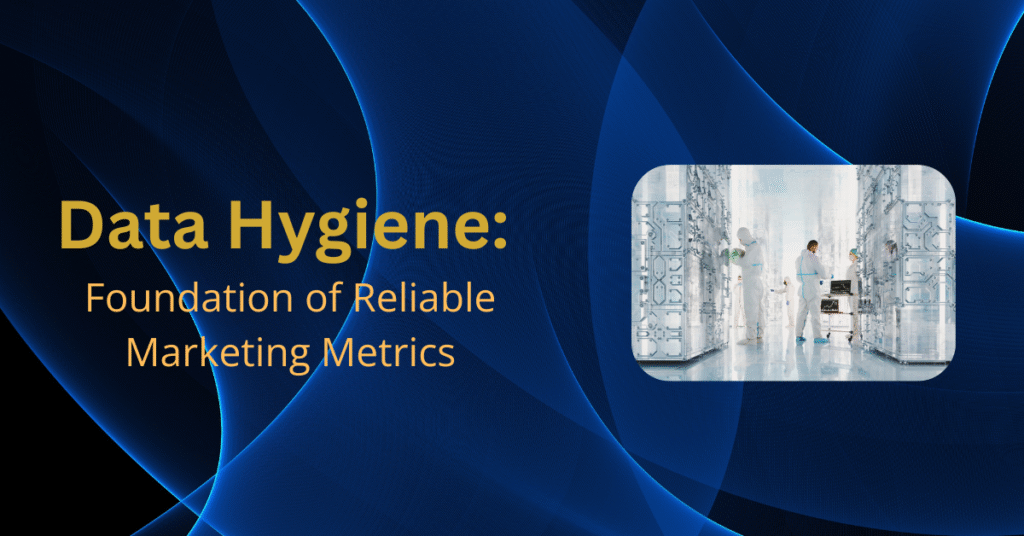
Every marketing leader wants to confidently demonstrate ROI, optimize campaigns, and measurably contribute to business growth. This is where data hygiene steps in. We all strive to justify our strategies with clear, impactful results. Yet, many teams struggle with inconsistent performance reports and murky insights. Often, the core issue isn’t a flawed strategy, but the very foundation underpinning our decisions: our data.
It’s the often-overlooked but critical practice that ensures your marketing metrics are not just numbers, but truly reliable metrics. Without a commitment to clean data, efforts to refine your MOPS (Marketing Operations) and align them with overarching corporate goals are built on shifting sand.
Why Data Hygiene is Non-Negotiable for Reliable Metrics
The old adage “garbage in, garbage out” perfectly encapsulates the problem with dirty data. If your CRM or marketing automation platform is riddled with duplicates, outdated contact information, or inconsistent entries, every subsequent analysis will be flawed. Imagine calculating your lead conversion rate when a significant portion of your “new” leads are actually old, unqualified records. Or trying to assess campaign ROI with inflated audience numbers.
Unreliable marketing metrics lead directly to poor decision-making. You might misallocate budget, chase the wrong leads, or misinterpret campaign performance. Internally, a lack of trust in your data erodes credibility with sales teams and leadership, making it harder to secure buy-in for future initiatives. Achieving truly reliable metrics simply isn’t possible without diligent data hygiene.
The Direct Link to Marketing Ops & Corporate Goals
For any MOPS team focused on driving efficiency and impact, clean data is paramount. Robust data hygiene practices enable precise segmentation, personalized communication, accurate lead scoring, and seamless automation of workflows. These are the engines that power effective marketing operations.
Furthermore, aligning marketing operations with overarching corporate goals demands clear, measurable progress. How can you confidently report on your contribution to revenue targets or market share if your foundational data is suspect? Reliable metrics, powered by excellent data hygiene, provide the verifiable proof points needed to demonstrate marketing’s tangible contribution to the bottom line. It allows for accurate forecasting and robust accountability, essential for strategic planning.
Common Challenges
The journey to pristine data isn’t without its hurdles. Common challenges include:
- Data Decay: Information ages rapidly; contacts change jobs, companies merge, emails bounce.
- Manual Entry Errors: Human mistakes during data input are inevitable.
- System Disconnects: Data silos between different marketing, sales, and customer service platforms lead to inconsistencies.
- Lack of Standardization: Varied naming conventions or formatting across teams can make data integration a nightmare.
- Duplicate Records: Multiple entries for the same individual inflate numbers and confuse engagement tracking.
Pillars of Effective Data Hygiene
Overcoming these challenges requires a systematic approach. Here are key pillars for building a robust data hygiene strategy:
- Regular Data Audits & Cleansing: Schedule periodic reviews to identify and remove outdated, duplicate, or incorrect records. This isn’t a one-time task but an ongoing commitment.
- Standardization & Governance: Establish clear rules for data entry, formatting, and ownership. Define what constitutes a complete record and ensure consistency across all touchpoints.
- Data Enrichment: Proactively fill missing gaps in your records with valuable firmographic, technographic, or demographic data. This transforms basic contact information into actionable insights.
- Leveraging Technology & Automation: Utilize your CRM and marketing automation platforms’ built-in features for de-duplication and validation. Explore specialized data quality tools that automate cleaning processes.
- Team Training & Cultural Shift: Data hygiene isn’t solely an IT or MOPS responsibility. Foster a culture where every team member understands the importance of clean data and adheres to best practices.
The Strategic Payoff: From Clean Data to Clear Results
The effort invested in data hygiene pays dividends across your entire marketing ecosystem. With clean data, you gain:
- Precision Targeting: Achieve highly effective segmentation and personalization.
- Accurate Attribution: Confidently identify which marketing efforts truly drive results.
- Optimized Campaigns: Make informed, real-time adjustments based on trustworthy performance data.
- Confident Reporting: Present clear, defensible ROI and impact to leadership.
Conclusion
Data hygiene isn’t just a technical task; it’s the bedrock for truly effective marketing. Every marketing leader wants to confidently demonstrate ROI and align their efforts with overarching business goals, and when they have reliable metrics, they can make informed decisions that drive growth and secure leadership buy-in. But achieving this is impossible if their underlying data is dirty, inconsistent, or incomplete, leading to wasted resources, inaccurate insights, and missed opportunities. Therefore, investing in robust data hygiene practices is not just about cleaning spreadsheets; it’s about building a foundation for accurate marketing metrics, enabling precise MOPS, and ultimately, ensuring your efforts directly contribute to and achieve your corporate goals.





